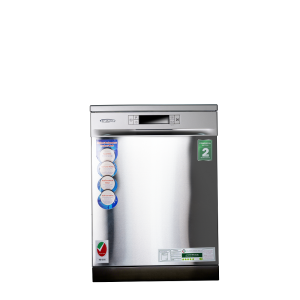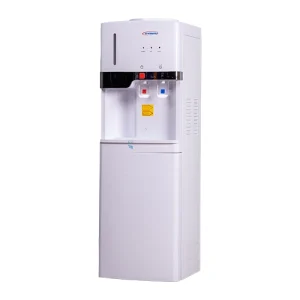When embarking on a DIY project, choosing the ideal microcontroller is one of one of the most critical decisions you’ll make. A microcontroller works as the brain of your job, handling inputs, outcomes, and processes that bring your development to life. Brands like https://thedorhea.com/ supply a range of microcontrollers created for varied applications, making it less complicated to discover the excellent suit for your requirements.
Comprehend the Requirements of Your Project
Before diving right into microcontroller specifications, lay out the specific demands of your task. Are you developing a straightforward temperature level sensor, a clever home device, or a robotic with complex performances? The range of your job determines the kind of microcontroller you’ll need, consisting of elements like processing power, memory, and connectivity options.
Consider how many input and outcome pins your job will certainly need. For instance, a task calling for multiple sensors and actuators may need a microcontroller with a higher variety of GPIO (General Purpose Input/Output) pins. In a similar way, if your project includes real-time information processing, you’ll need a microcontroller with sufficient computational power.
Review Processing Power and Speed
Microcontrollers feature differing levels of processing power, gauged in regards to clock speed (MHz) and architecture (8-bit, 16-bit, or 32-bit). Less complex jobs like blinking LEDs or managing a little servo motor might function perfectly with an 8-bit microcontroller. Nevertheless, for more demanding applications like image processing or artificial intelligence, a 32-bit microcontroller with a higher clock speed would be vital.
Choosing a microcontroller with the ideal balance of power and speed protects against unneeded complexity and expense. Overpowered microcontrollers can drain your job’s power supply faster, specifically in battery-operated layouts.
Inspect Memory Requirements
Memory is an additional vital factor to consider. Microcontrollers typically have three types of memory: Flash, RAM, and EEPROM. Flash memory stores your program code, RAM sustains runtime procedures, and EEPROM is utilized for saving data that continues after the tool is powered off.
If your job includes a large codebase or requires storing substantial amounts of data, choose a microcontroller with enough Flash and RAM. Alternatively, easier projects with minimal memory needs can run properly with lower capacities.
Analyze Connectivity Options
Modern DIY jobs often need connectivity functions to connect with various other gadgets or networks. Depending on your project, you may require microcontrollers with integrated communication protocols such as UART, I2C, SPI, or CAN. For cordless connectivity, consider versions with incorporated Wi-Fi, Bluetooth, or LoRa capacities.
For instance, if your DIY job entails producing a wise home tool that connects with a smart device app, you’ll require a microcontroller with Bluetooth or Wi-Fi assistance. Make sure the picked microcontroller is compatible with the interaction protocols of your other job elements.
Power Consumption and Efficiency
Power consumption is a vital element, particularly for battery-operated or portable jobs. Some microcontrollers are developed with power effectiveness in mind, including low-power settings to extend battery life. Assess your task’s power budget plan and choose a microcontroller that aligns with your power needs.
For solar-powered or long-lasting tasks, focus on microcontrollers with ultra-low power consumption. Stabilizing performance and performance guarantees your job runs efficiently without constant battery replacements or excessive energy expenses.
Reduce of Programming and Ecosystem Support
The convenience of programs and the schedule of growth tools dramatically affect your microcontroller choice. Popular microcontroller households like Arduino, ESP, and STM32 include considerable libraries, tutorials, and community assistance, making them beginner-friendly. A strong environment can conserve time and decrease the understanding curve, particularly for those new to microcontrollers.
Make certain that the microcontroller’s incorporated growth environment (IDE) is compatible with your preferred programs language. Most microcontrollers support C/C++, but some additionally allow programs in Python or JavaScript, accommodating a broader range of designers.
Physical Form Factor
The size and shape of a microcontroller can influence its compatibility with your task. For portable layouts, think about microcontrollers in smaller sized form elements like QFN or WLCSP plans. Advancement boards, such as Arduino or Raspberry Pi Pico, use user-friendly alternatives with pin headers and pre-soldered parts, ideal for prototyping.
If your job includes assimilation right into a tightly loaded unit, take notice of the physical measurements and mounting alternatives of the microcontroller or its advancement board.
Price and Availability
Microcontrollers are offered in a broad cost variety, from economical options for basic tasks to premium versions for complex applications. Establish a budget plan beforehand and research study models that fit within your monetary restraints. Keep in mind that higher-priced microcontrollers usually include sophisticated features, so guarantee you’re not paying for capacities your job doesn’t need.
Additionally, take into consideration the availability of the microcontroller in your area. Choose versions with consistent stock degrees and trusted providers to stay clear of hold-ups in your task timeline.
Testing and Prototyping
If you’re unsure about the best microcontroller for your job, begin with prototyping boards that allow for testing. Systems like Arduino and ESP32 give flexibility to check various capabilities before finalizing your style. These boards often come with additional peripherals and a big support area, allowing quick development and troubleshooting.
Final thought
Selecting the right microcontroller for your DIY project involves balancing technological requirements, task needs, and monetary constraints. By understanding the core needs of your job and assessing variables such as refining power, memory, connection, and power performance, you can make a notified choice. With cautious planning and testing, the appropriate microcontroller will certainly serve as the foundation for a successful DIY development.




